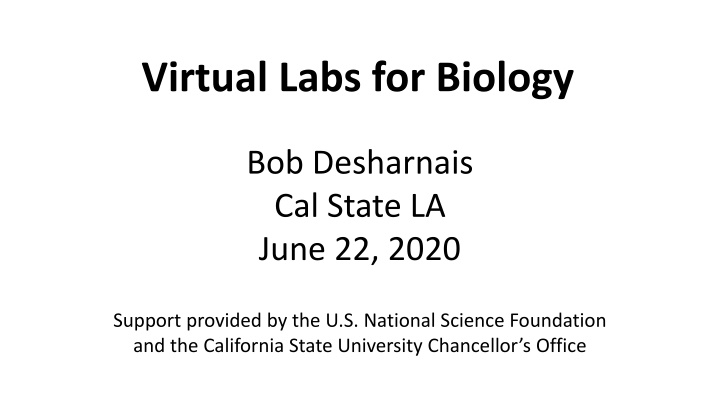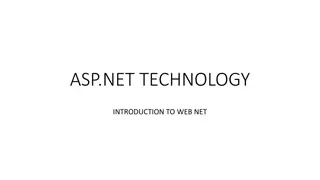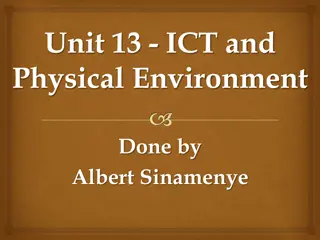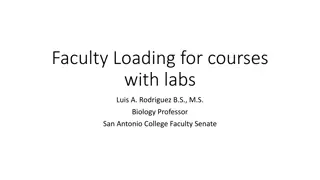Virtual Labs for Biology: Advantages, Disadvantages, and Case Study Insights
Explore the world of virtual labs in biology through an in-depth analysis of their advantages and disadvantages, accompanied by a compelling case study in GE Biology. Discover the impact on course grades, attitudes, and delivery models based on different lab types.
Download Presentation

Please find below an Image/Link to download the presentation.
The content on the website is provided AS IS for your information and personal use only. It may not be sold, licensed, or shared on other websites without obtaining consent from the author.If you encounter any issues during the download, it is possible that the publisher has removed the file from their server.
You are allowed to download the files provided on this website for personal or commercial use, subject to the condition that they are used lawfully. All files are the property of their respective owners.
The content on the website is provided AS IS for your information and personal use only. It may not be sold, licensed, or shared on other websites without obtaining consent from the author.
E N D
Presentation Transcript
Virtual Labs for Biology Bob Desharnais Cal State LA June 22, 2020 Support provided by the U.S. National Science Foundation and the California State University Chancellor s Office
Outline Example of a virtual lab: FlyLab JS Advantages & disadvantages of virtual labs Case study: GE Biology
Example of a Virtual Lab: FlyLab JS ScienceCourseware.org/FlyLabJS
Advantages and Disadvantages of Virtual Labs Advantages Add opportunities for inquiry-based learning Address difficult lab topics (e.g. evolution) Allow students to learn from mistakes Better engage students Improved convenience (e.g. 24/7 access) Disadvantages Doesn t allow for learning lab skills (esp. majors) Oversimplification of reality Group interactions are more difficult
Case Study: GE Biology BIOL 155 Animal Biology Three delivery models Traditional wet labs (8 sect) All online virtual labs & drop-in help (8 sect) Hybrid in-person/online virtual labs (16 sect) Assessment Analysis of course grades Pre/post attitude surveys
Assessment: Course Grades Repeatable Grades Course GPAs 3.4 16% 3.2 14% Repeatable Grades 12% 3.0 Course GPA 10% 2.8 8% 2.6 6% 2.4 4% 2.2 2% 2.0 0% Wet Online Hybrid Wet Online Hybrid Type of Laboratory Type of Laboratory
Assessment: Survey of Attitudes Change in Favorable Attitudes Mean Change in Percent Favorable 8% Responses Towards Biology 6% 4% 2% 0% -2% -4% Wet Virtual Hybrid Type of Laboratory
PL (n=92) VL-A (n=95) VL-H (n=156) Wet Online Hybrid Category Overall Problem-solving difficulty Problem-solving effort Problem-solving strategies Conceptual connections Real world connections Reasoning Enjoyment -0.26% 1.99% -1.22% 1.55% +4.57% 1.36% -0.02% 2.69% +0.74% 2.97% +4.28% 2.14% +0.08% 2.38% +1.32% 2.97% +6.97% 2.39% -0.26% 2.38% +4.17% 3.59% +8.39% 2.91% -4.04% 2.58% +1.02% 2.74% +3.21% 2.12% -0.24% 2.62% -2.43% 2.82% +5.25% 2.03% -6.68% 2.80% -4.41% 3.59% +2.44% 2.29% +0.97% 2.15% +1.33% 2.62% +6.30% 1.95% Son, J.Y., Narguizian, P., Beltz, D., and Desharnais, R.A. 2016. Comparing physical, virtual, and hybrid flipped labs for general education biology. Online Learning Journal 20: 228 243.























